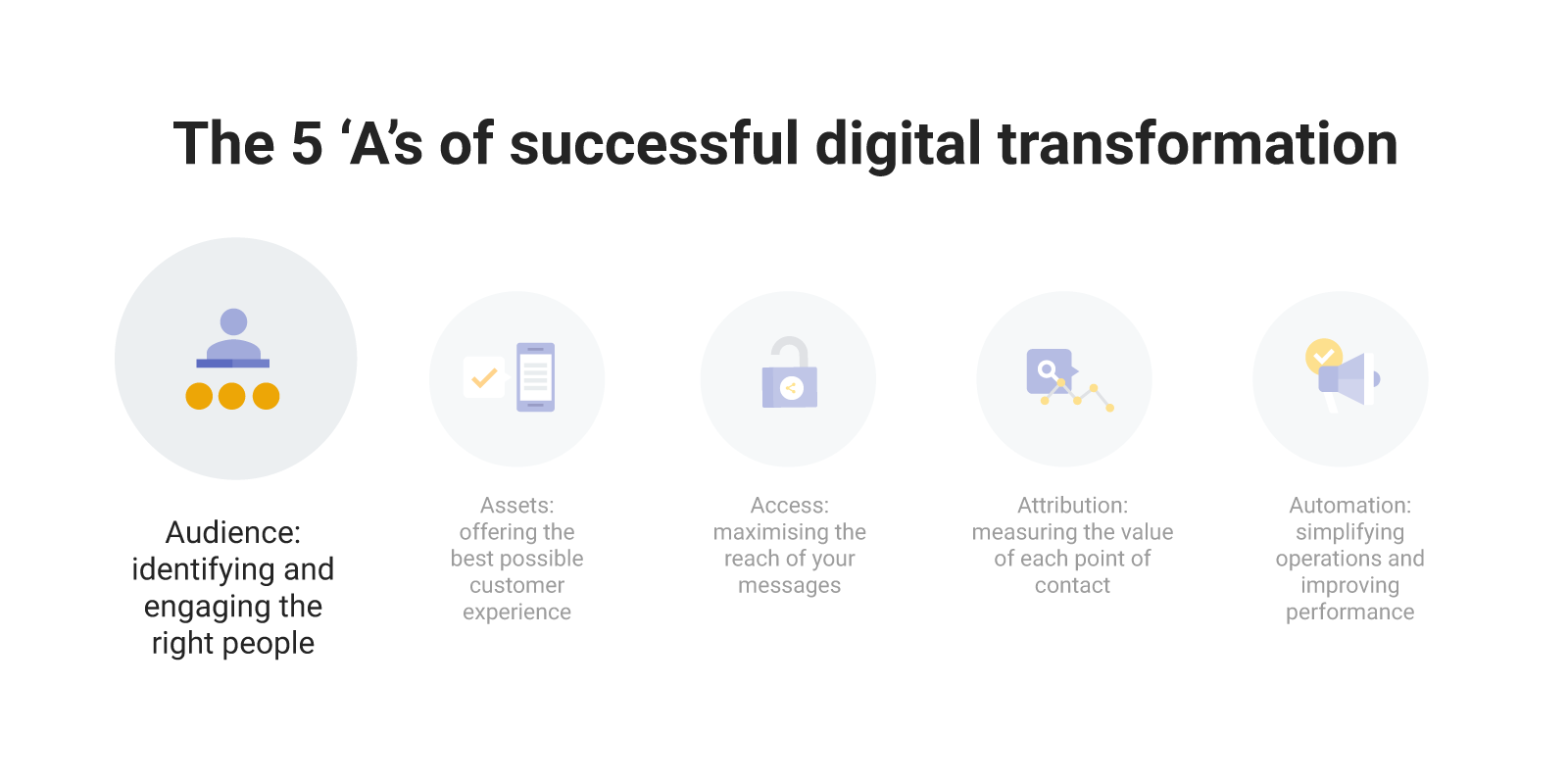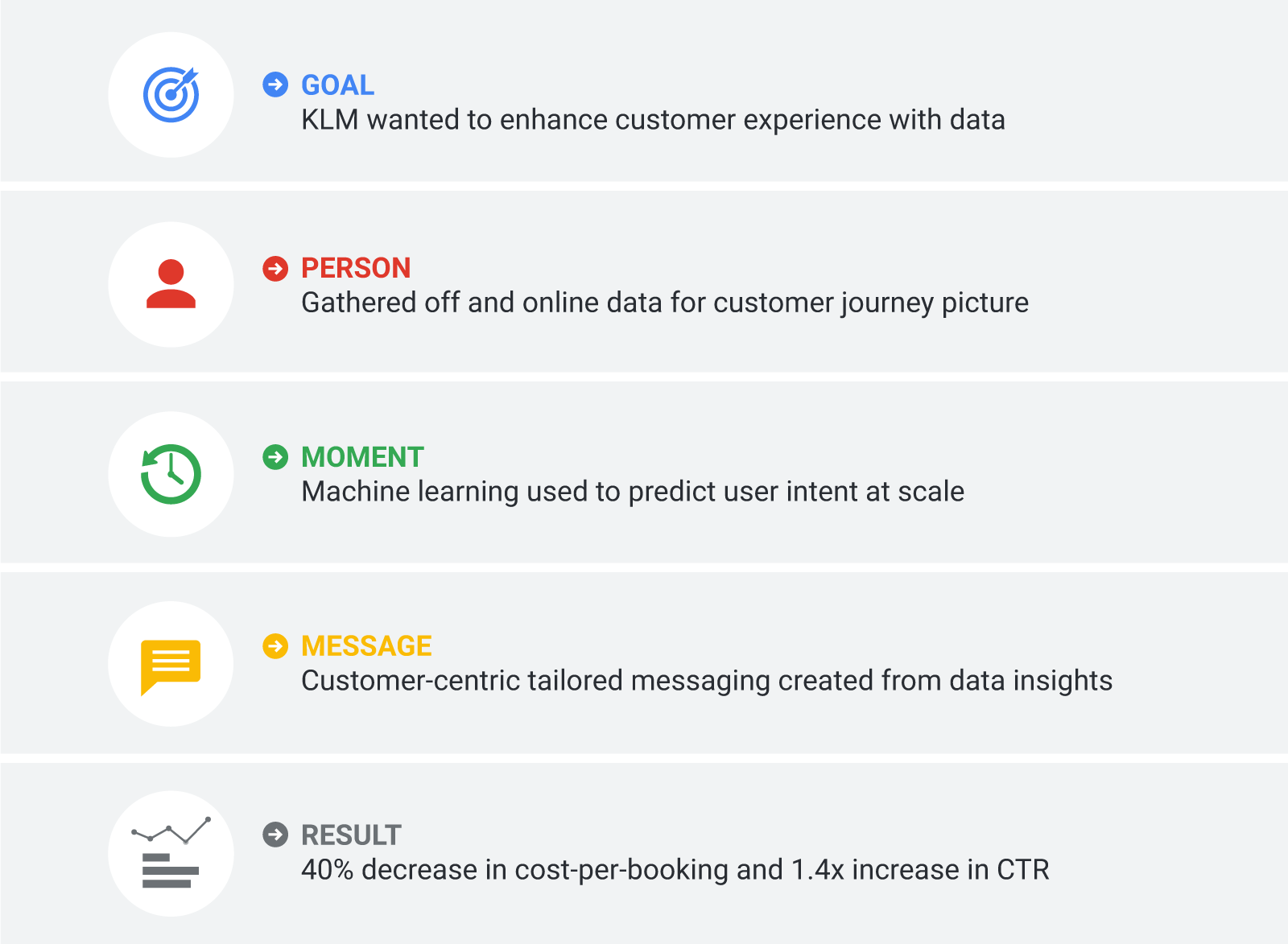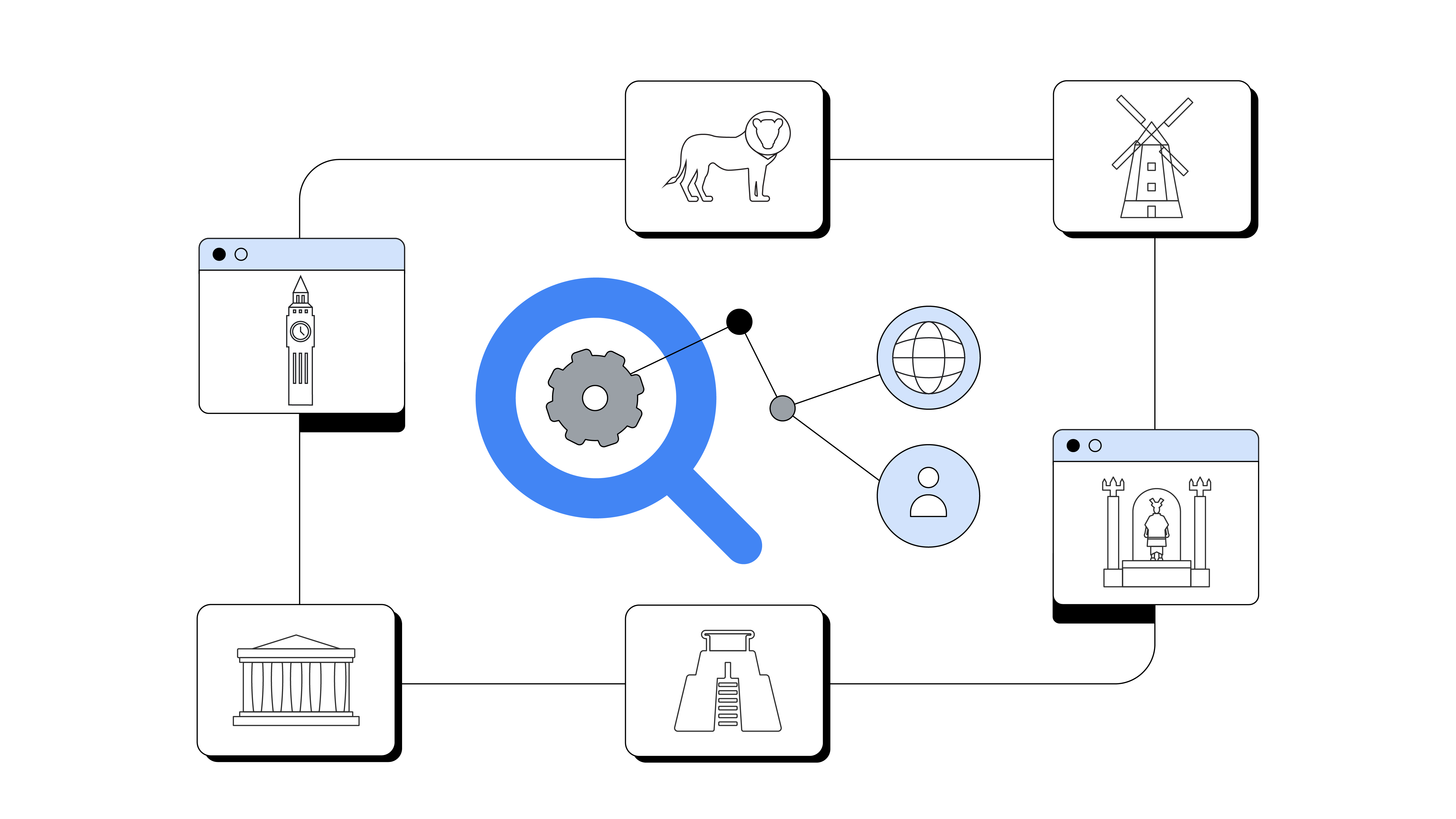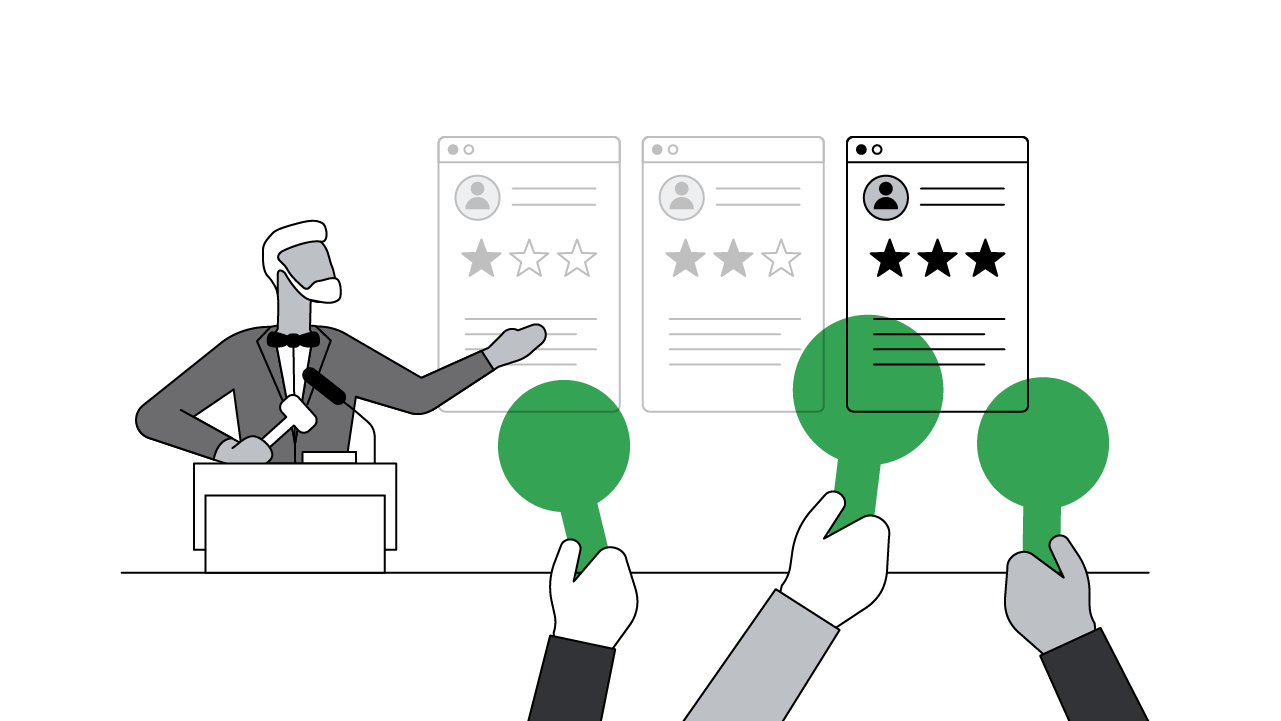In the first of a series of articles looking at the 5 As of digital marketing transformation, we consider the most essential component of any marketing campaign – the audience.

All too often consumers these days find themselves faced with ads that aren’t matched to their needs. Marketing messages can be either poorly targeted or timed, showing products they don’t want, or chasing them to buy items they’ve already purchased.
In a world where technology has given people increased choice and control over where they direct their attention, this approach is increasingly ineffective. As we established in 'The 5 As of successful digital marketing transformation', marketing activity needs to be aware and respectful of its audience, otherwise it will likely be ignored.
Understanding your audience
But how do you ensure that your marketing activity responds to the needs of your audience? Relevance is critical here, and as most marketers are aware, data is the key to unlocking relevance for the user. With the right data you can move beyond mass marketing and start having valuable engagements with individual consumers.
Data-driven marketing isn’t a new idea, but many businesses still struggle to implement the strategy. One reason for this is the danger of becoming overwhelmed by the volume of information available, and the number of options when it comes to activating your data.
To counteract this, it’s best to organise your data within a framework such as See-Think-Do-Care, which can help you identify the different stages of intent in the customer journey.
Enhance your audience insights
In addition to your own data, you can also make use of Google’s audience signals to ensure a relevant ads experience. The data is derived from seven of Google’s products, all of which have more than a billion users, and includes demographics and in-market indicators to help identify the three elements at the heart of a relevant customer journey:
- The right person
- The right moment
- The right message
These audience signals are available to use right away, and are a great way to get started if you’re still in the process of collating and analysing your own customer data.
Audience success stories
Over recent months, several brands have achieved great success by focusing on audience insights.
For example, Jotex, a leading home furnishing and decoration ecommerce business, tested the use of audience signals relating to life events such as weddings and births to target customers during those moments. In addition, they used remarketing to create a regular dialogue with their most engaged audience segments, such as repeat visitors and existing customers.
With a clearer focus on the right person and the right moment, they were able to craft the right message, resulting in 10% growth in new customer acquisition, 22% increase in revenue and a 45% uplift in ad recall.
For retail chain HEMA, in-market, intent and interest targeting gave them the opportunity to reach customers during important moments such as party planning and preparing for the arrival of a new baby.
Using Google Audience signals they were able to serve the right dynamic creative to the right customer at exactly the right moment, achieving an omnichannel return-on-investment of 453% and a conversion rate uplift of 20% compared to regular campaigns.
Likewise, Dutch airline KLM wanted to use their data to create better customer experiences.

To achieve this, KLM first compiled their various online and offline data sources to give them a clear picture of the full customer journey, and then turned to machine learning to predict user intent at scale.
With the insights provided by their predictive model, they were then able to serve up tailored messaging, resulting in a 40% reduction in cost-per-booking and a click-through rate of 1.4X that of the control group.







